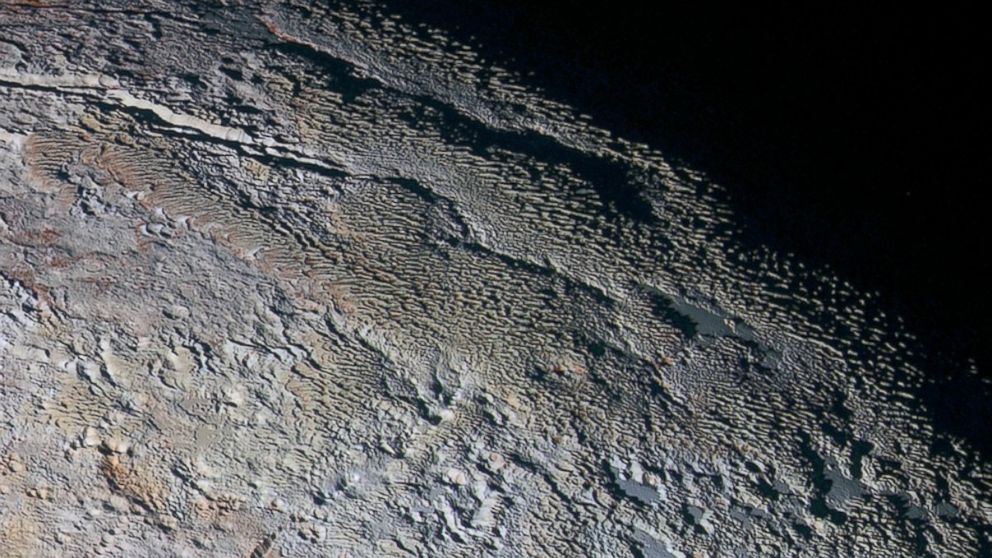New Horizons Probe Snaps Snakeskin-Like Texture of Pluto's Surface
What scientists believe could be causing scales on Pluto.

— -- Pluto continues to surprise scientists who are sifting through the photos and data being sent back to Earth from the New Horizons space probe. The latest curiosity: A photo showing a snakeskin-like texture on the surface of the dwarf planet.
"It's a unique and perplexing landscape stretching over hundreds of miles. It looks more like tree bark or dragon scales than geology," William McKinnon, who works on the geology, geophysics and imaging team for New Horizons, said in a statement.
He speculated the unique area captured in the photo could be "some combination of internal tectonic forces and ice sublimation driven by Pluto's faint sunlight."
New Horizons is in the process of sending a trove of data and photos back to Earth. With data downlinking at a rate of approximately 1 to 4 kilobits per second, it's expected the entire trove of science from the July 14 flyby will take one year to be transmitted back to Earth.
Launched in January 2006 on a 3-billion-mile journey to Pluto, New Horizons "phoned home" after its Pluto flyby, indicating that it had successfully navigated just 7,700 miles from the dwarf planet. It later sent back the first high-resolution images of Pluto's surface.
New Horizons conserved energy by taking "naps" during the monumental trip. The spacecraft, equipped with a battery that converts radiation from decaying plutonium into electricity, may have enough power for two more decades of exploration, according to NASA.
The piano-sized probe is currently speeding through the Kuiper Belt, an area at the edge of the solar system encompassing Pluto and a vast area of tiny, icy worlds. After the intensive data transmission process, NASA is considering another flyby of a Kuiper belt object known as 2014 MU69 that orbits nearly a billion miles beyond Pluto.
New Horizons loses about a few watts of power each year, according to NASA, but is estimated to have as much as 20 years left in its life expectancy.




